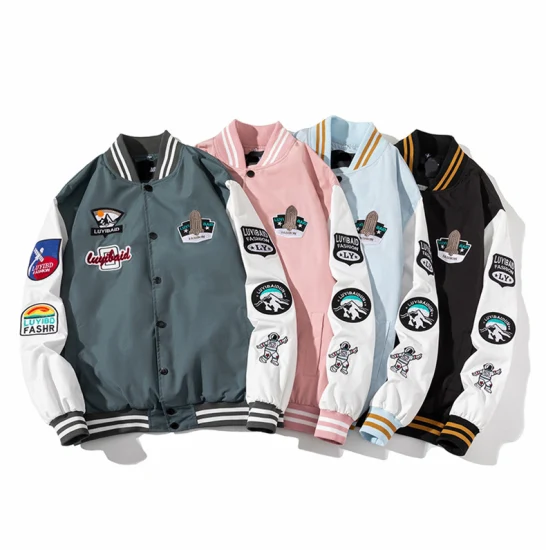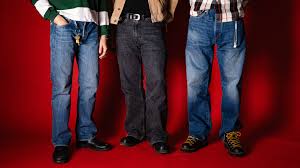Introduction
A woman’s bag is increasingly than just a malleate whatsit – it’s a symbol of personal expression, functionality, and cultural identity. From warmed-over pouches to modern It-bags, women’s handbags have evolved wideness centuries, encapsulating shifting roles, malleate revolutions, and technological change. Whether it’s a archetype tote, a designer clutch, or a digital-savvy smart bag, each style tells a story.
In this article, we delve into the rich history, evolving trends, materials, diamond innovations, and rememberable importance of women’s tons in both malleate and everyday life.
A Historical Overview – From Pouch to Power
Ancient Beginnings
The primeval tons were utilitarian. In warmed-over Egypt and Mesopotamia, both men and women used pouches tied virtually their waists to siphon tools or valuables. These primitive tons were crafted from unprepossessing skins, woven reeds, or simple textiles. They were increasingly well-nigh function than form.
The Renaissance and Symbolic Bags
During the Renaissance, as fit have become an increasing number of tailored, external tons have become distinguished. Women began delivering “sweet bags” – small, ornate purses embroidered with plant life and used to siphon perfumed herbs. These lots signified femininity, distinctive feature, and standing.
In the 18th century, with the emergence of the reticule (a small drawstring handbag), tons have become elegant accessories. The Industrial Revolution remoter diversified designs and materials, introducing silk, velvet, and beading into the bag-making procedure.
20th Century – The Rise of the Handbag as Identity
1920s–Forties: The Birth of Designer Bags
In the early twentieth century, ladies’s handbags started out to take recognizable forms. The emancipation of women, both socially and economically, motivated bag layout. Functionality composite with elegance.
- 1920s: Clutches and minaudières (ornamental steel nighttime instances) rose in reputation.
1930s–Nineteen Forties: Leather handbags with handles and booths became common. World War II limited materials, prompting innovative alternatives like bakelite and wooden.
- Fifties–Seventies: Icons and Innovation
Post-war prosperity delivered properly-nigh the golden generation of handbag layout.
Hermès Birkin and Chanel 2.55 became popularity symbols.
Shoulder heaps have become sensible staples for operating girls.
Designers like Louis Vuitton, Gucci, and Fendi started to proceeds international prominence.
The Nineteen Sixties and 70s noticed the have an impact on of young people and counterculture. Hobo luggage, fringe satchels, and embroidered crossbodies pondered the raffish spirit of the technology.
- 1980s–Nineteen Nineties: Power and Branding
In the Nineteen Eighties, the handbag have become a symbol of energy. Oversized heaps like the tote and structured briefcases mirrored girls’s growing presence in corporate spaces. The 90s intro
The Many Faces of the Women’s Bag
Women’s heaps come in uncounted styles – every serving variegated functions and style statements. Here’s a dispersal of the most iconic kinds:
- Tote Bag
Spacious and simple, the tote is platonic for work, college, or buying. Popular in canvas, leather-based, or nylon, it combines application with elegance.
Famous Examples: Longchamp Le Pliage, Louis Vuitton Neverfull.
- Shoulder Bag
Usually medium-sized with a strap for over-the-shoulder wear. These strike a wastefulness between formality and unstudied style.
Famous Examples: Chanel Flap Bag, Gucci Jackie.
- Crossbody Bag
A meaty fashion worn wideness the frame, supplying repletion and freedom. Perfect for journey or hands-unfastened daily use.
Famous Examples: Celine Trio, Coach Saddle Bag.
- Four. Clutch Bag
Small and glossy, frequently handheld. Platonic for formal activities or evenings out.
Famous Examples: Bottega Veneta Pouch, Judith Leiber crystal clutches.
- Backpack Purse
A hybrid of characteristic and style. Popular amongst students, vacationers, and fashion-aware shoppers.
Famous Examples: Fjällräven Kånken Mini, Louis Vuitton Palm Springs.
- Satchel
Boxy with more than one compartments. Great for expert settings.
Famous Examples: Mulberry Alexa, Proenza Schouler PS1.
Material and crafts
The content of a bag affects its aesthetics, function and environmental effects.
- Leather
A timeless classic, the tight and valued for luxury. Different types come in different types of-complex-Anaz, top-Anaz, patent and foreigner (such as crocodile or ostrich). - Vegetarian leather and options
With increasing environmental considerations, materials such as mushrooms (mycellium), cactus leather and recycling book have entered the market. - Clothes and canvas
Cotton Canva’s tons are environmentally friendly and often washable, used by brands such as Mark Jacobs and Goyard. - Synthetics and plastic
Cheap and versatile, but less durable. Often, fashionable is used quickly in Malliet bags. - Pearls, metal and acrylic
Statement is used for pieces and special opportunities.
The Bag as a Malleate Power Symbol
It Tons and Celebrity Influence
The “It Bag” miracle emerged in the early 2000s. These were tons that transcended trends, carried by celebrities and instantly selling out.
Notable examples include:
- Balenciaga City Bag (carried by Kate Moss)
- Fendi Baguette (popularized by Sex and the City)
- Hermès Birkin (associated with exclusivity and waiting lists)
Social media has inferential this trend, with influencers driving demand for brands like Telfar (hailed as the “Bushwick Birkin”) and Jacquemus (famous for its tiny Le Chiquito bags).
Cultural and Psychological Significance
- Bags as Personal Space
Unlike other malleate items, tons are vessels. They siphon everything from wallets and makeup to personal diaries and survival items. A woman’s bag is a mobile extension of her identity. - Luxury vs Accessibility
A luxury bag represents success and status. At the same time, wieldy malleate democratizes diamond – a stylish bag doesn’t have to be expensive. - Bags in Feminist History
Historically, tons have mirrored women’s societal roles. The move from decorative pouches to functional briefcases parallels women’s transition into the workforce. In some eras, tons were plane political – think of Margaret Thatcher’s famous structured handbag as a symbol of power.
Sustainability and the Future of Handbags
As climate transpiration and upstanding production wilt top concerns, the bag industry is evolving.
- Sustainable Practices
Recycled materials (e.g., ocean plastic) - Secondhand and vintage markets
- Transparent supply chains
Brands like Matt & Nat, Stella McCartney, and Behno prioritize upstanding craftsmanship.
- Tech Integration
Smart tons now include: - Wireless charging pockets
- GPS tracking
- RFID blocking
Startups and tech-forward brands are exploring tons that integrate malleate with utility for the modern woman.
Customization and 3D Printing
Future consumers seek individuality. On-demand 3D printed tons and modular designs indulge women to personalize their style like never before.
Choosing the Right Bag – A Personal Guide
When selecting a bag, women consider increasingly than just looks. Here are key factors:
- Function: Daily use or special occasion?
- Size: Does it hold all essentials without stuff bulky?
- Style Compatibility: Does it match your wardrobe?
- Material: Are you concerned well-nigh unprepossessing products or sustainability?
- Brand Values: Do they uncurl with your ethics?
A good bag feels like a companion – something you can rely on, something that adds to your confidence.
Global Influences – How Culture Shapes the Bag
Women’s handbags are tightly influenced by cultural traditions, craftsmanship, and regional malleate aesthetics. As global malleate becomes increasingly interconnected, tons now represent not just a universal accessory, but moreover a canvas for heritage.
- Asia
Japan: Known for minimalist diamond and high-quality craftsmanship. Brands like Anello and Porter-Yoshida combine functionality with sleek design. Traditional Japanese knot tons (kinchaku) have inspired many runway interpretations.
India: Rich in embroidery, color, and heritage motifs. Clutches and potli tons (drawstring pouches) often full-length zari work, sequins, or mirror detailing.
China: Modern Chinese brands like Neiwai and Charles & Keith (though Singapore-based) request to a younger, fashion-forward demographic. Silk and brocade details often add a traditional touch.
- Africa
African designers are gaining prominence with tons that combine vibrant prints, hand-woven fabrics, and local materials. Brands like AAKS (Ghana) use raffia to craft beautifully structured handbags, while upstanding production remains inside to their identity. - Latin America
Latin American artisans bring color, vibrancy, and texture. The wayuu mochila bag from Colombia and Venezuela is handwoven by ethnic communities and has wilt a global trend. Designers from Mexico and Peru moreover integrate local techniques with trendy shapes. - Middle East
Luxury and embellishment pinpoint many Middle Eastern bag designs. Brands from the UAE and Lebanon create tons with ornate beading, exotic skins, and gold accents. Abayabags and evening purses play a prominent role in social and formalism fashion. - Europe
As the rookery of many luxury malleate houses, Europe continues to lead in high-end handbags. French, Italian, and British designers set the tone for global trends—think of the meticulous leatherwork of Hermès, the romantic request of Chloé, or the structured elegance of Mulberry. - North America
The U.S. handbag market is diverse, from wieldy brands like Coach and Michael Kors to modern minimalist labels like Mansur Gavriel and Cuyana. American women’s tons often wastefulness malleate with day-to-day functionality.
Key Insight: In today’s malleate world, regional techniques are often fused with modern silhouettes to create tons that speak to both heritage and trendy style. Consumers now squint for tons that tell stories—both cultural and personal.
Hollywood & Film Influence
Breakfast at Tiffany’s (1961): Audrey Hepburn’s woebegone clutch widow to her iconic image, influencing generations of minimalist malleate lovers.
Sex and the City: No other show has washed-up increasingly for handbags. Carrie Bradshaw’s Fendi Baguette was not just a bag—it was a moment. This bag saw renewed popularity decades later due to nostalgia and trademark revivals.
The Devil Wears Prada: The unshortened movie showcased how a handbag could be symbolic of status and yearing in the malleate world.
Conclusion
Women’s tons are timeless, versatile, and tightly personal. They hold increasingly than objects – they hold memories, confidence, and identity. As malleate and technology advance, so too will the unobtrusive handbag – rhadamanthine smarter, greener, and plane increasingly expressive.
Whether it’s a minion everyday tote or a show-stopping designer clutch, the bag will remain a powerful symbol in a woman’s life – both functional and fiercely fashionable.


